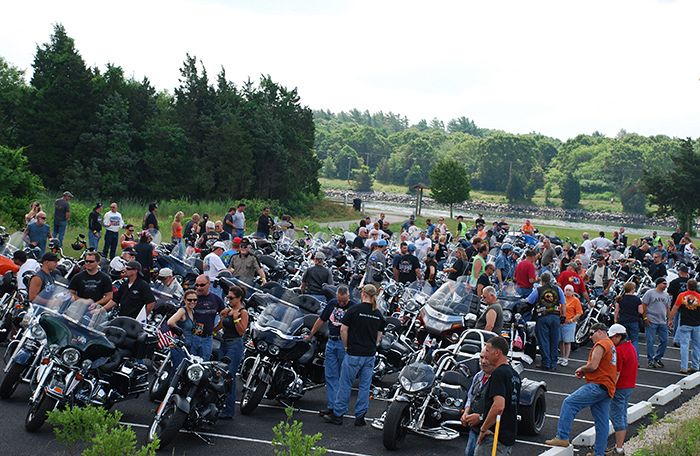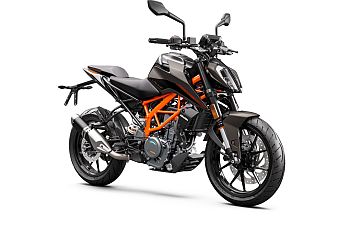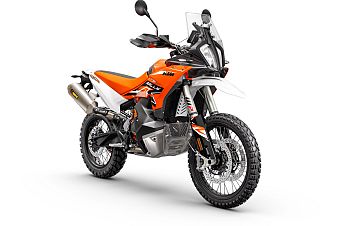I have heard it argued by some who prefer not to ride in groups that group riding is no more than playing 'follow the leader'. And since most of us that ride big bikes are far from being simply followers, group riding is for 'the other guys'.
Well, I have no problem with people preferring to ride solo. But if the concept of group riding is generally thought to be simply playing 'follow the leader', I'd like to correct that impression immediately.
When you join a group ride you do agree to be led by a lead bike and to be shepherded by a drag bike. You agree that you will station-keep (maintain proper spacing and a staggered formation). And you agree that you will adopt the 'prime directive' (never hit the bike in front of you).
Sounds like 'follow the leader' to me, too. But there is more. You, for example, agree to follow the lead bike UNLESS IT IS INTO DANGER. You agree to rely solely on yourself to determine that a lane change is safe for you to perform. You agree, in other words, to be responsible for your own safety. This is what is meant by the often heard admonition to 'ride your own ride!'
In other words, riding in a group is more than being a passive component. It involves being an ACTIVE participant.
Lest you think this is a trivial 'nit pick' and that despite the above you are nevertheless still just following the leader, let me describe a few situations that might change your mind.
Yesterday a group of 7 people on 5 bikes went out for a short (150 mile) ride together. One of the people was a newbie to the group and to group riding. We explained what our concept of group riding entails, and he had received a copy of our group riding guidelines document the week before. Because there was a new rider in the group we started out very conservatively.
That is, our lead bike decided to place the new person in the slot immediately in front of me (riding drag) and when we got to a freeway he kept the group in the right-most lane. This was done to give me an opportunity to gauge the skills of the new rider before we increased our speed and moved left.
What I observed was that this person had fine control of his bike, but he was clearly anxious about being in the right lane (as was I.) There was rather a lot of merging traffic before we got out of town.
Someone in the group who was equally anxious said on the CB: "Hey, Harry, I have it on good authority that there are 2 more lanes on this freeway." Harry (our lead bike) responded by asking me to secure a lane to the left. I did so and the group moved to the left.
So? So one of the 'followers' changed the behavior of the group! He took an active role and asked, in his own fashion, for the group to move out of the slow lane.
[Had the newbie been having any trouble with highway speed or with control of his bike in any other way I would have vetoed the lane change and asked for an exit lane instead. The drag bike has a lot of discretion in our groups.] Taking an active role is expected of our riders! And not just to change some group behavior to accommodate a personal desire. Each rider in our group is expected to look out for the interests of the other riders as well.
Another example from yesterday. Cash and I separated from the rest of the group as the ride came to an end. We rode our two bikes together through some unfamiliar back country roads that had essentially no traffic on them. We traveled at speeds of from 60 to 70 MPH most of the time, so long as conditions were favorable.
Cash has led groups for in excess of 50,000 miles over the past 8 years and is very good at it. When we approach unfamiliar curves she does not push the envelope, especially when there are others in the group besides just the two of us. It is not unusual, however, for her to take a marked curve at from 10 to 20 MPH above posted advisory speed limits. (If a sign says that the speed of a curve is 45 MPH, Cash and I will usually take it about 60 MPH.)
Last night we were traveling at about 70 MPH when I noticed that we were about to enter a curve that was posted at 20 MPH!!! Cash had looked down at her instrument panel and had not noticed the sign at all. There is no way in the world that Cash would try to take that curve at 70 MPH. So, I announced that 'this one is 20!' on the CB and she hit her binders and brought her bike down to about 30 MPH before she entered the curve. I hasten to add that the curve was not visible at all before I made my announcement, at least to me. Cash had seen the first set of left-pointing arrows indicating that she was approaching a curve, but had no idea that it was such a slow one. We both made it through the curve without incident.
What's the message here? I took an ACTIVE role and warned her about the speed of the curve ahead. In other words, all riders in a group are expected to look out for everybody else. Cash may have been the lead bike at the time, but if I had simply been a passive rider 'following the leader', both of us would have ended up on the side of the road waiting for a life-flight helicopter, or worse.
Being in a group provides everyone with many extra pairs of eyes, extra minds to deal with situations others are not prepared to deal with, help in the event of problems, and a community of informed judgment makers. To think that any of the group would fail to be active when the need arose is out of the question. To think that anyone in our group of riding friends would have failed to warn Cash about the speed of the curve ahead is simply nuts. None of us will follow a lead bike into danger - but more importantly, none of us would allow a lead bike to enter danger without trying to prevent it. ACTIVE roles for all.











24
Comment